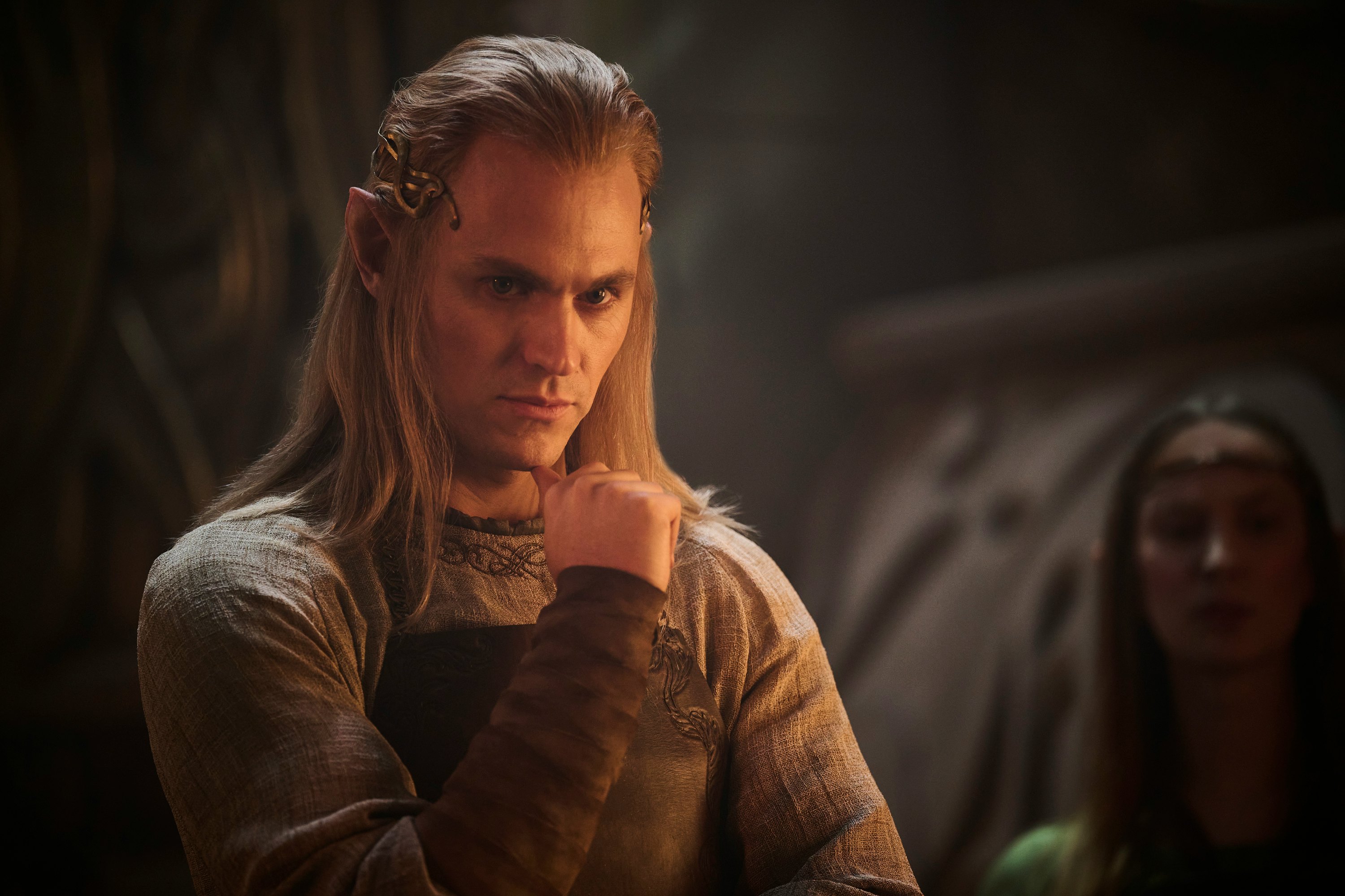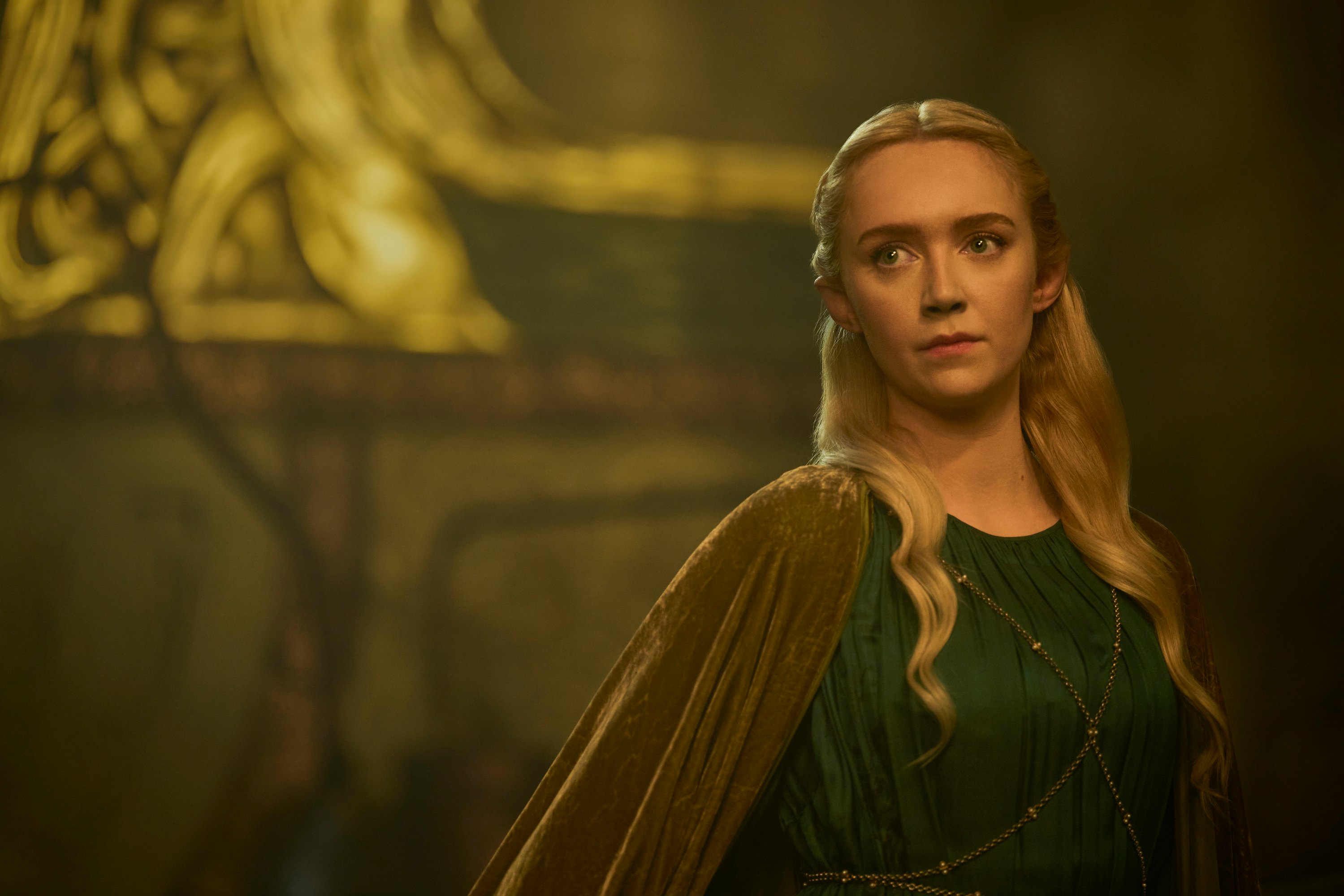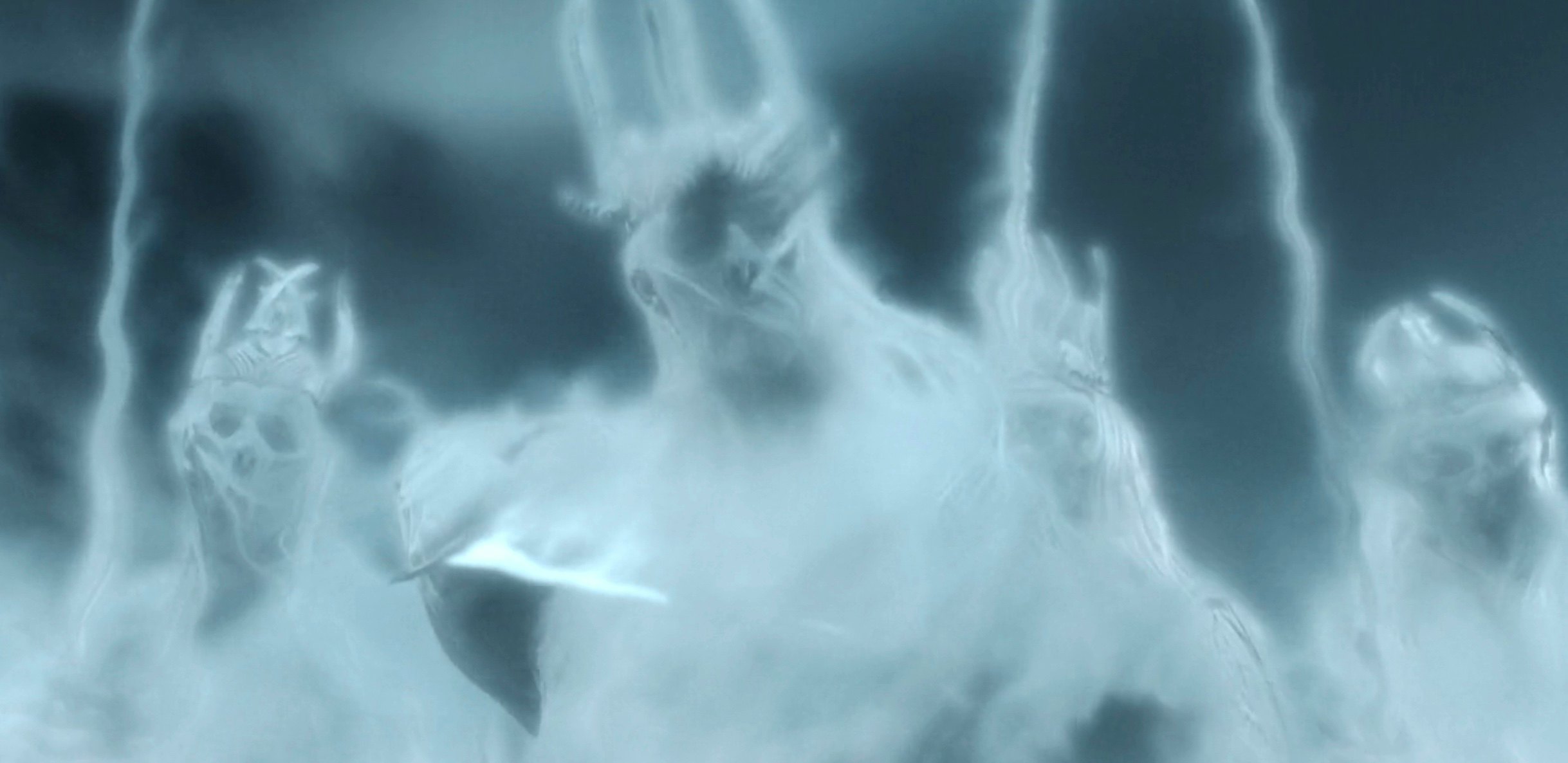
There have been multiple mentions of the Unseen World across The Lord of the Rings: The Rings of Power's first two seasons. Adar (then played by Joseph Mawle) tells Galadriel in the series' first season that Sauron wanted to use the Unseen World in order to achieve a "power over flesh rather than a power of the flesh." Pre-destruction Sauron (Jack Lowden) mentions this again in the prologue of The Rings of Power's Season 2 premiere. These lines have been vague at best. In its latest episode, though, The Rings of Power finally offers viewers some insight into what the Unseen World actually is.
Spoilers for The Rings of Power Season 2 Episode 5 follow!
The episode specifically features a moment in which Celebrimbor's (Charles Edwards) Elven assistant, Mirdania (Amelia Kenworthy), decides to test one of the Rings of Power that Annatar/Sauron (Charlie Vickers) is trying to create for the Men of Middle-earth. When she does, Mirdania briefly vanishes from sight until Celebrimbor helps pull her back into view. Afterward, she speaks of a seeing a terrifying, towering being of pure fiery malice standing in the room with them. (Sauron later tricks her into believing this is Celebrimbor's true form.)
This moment marks the first instance in which Rings of Power viewers have seen one of the show's eponymous artifacts turn a wearer invisible, and that's noteworthy for numerous reasons.
Entering the Unseen World

Both die-hard J.R.R. Tolkien fans and casual Lord of the Rings viewers should know that Sauron's One Ring has the power to turn its mortal bearers invisible. This happens multiple times in both the Lord of the Rings trilogy and in The Hobbit, and the Ring's ability to do so comes in handy for Bilbo Baggins and later his "nephew," Frodo. The thing is, though, that the One Ring doesn't actually makes its mortal wearers invisible. Instead, it transports them to the Unseen World — an alternate, magical plane of reality that exists in tandem with the Seen World. (Think the Upside Down in Stranger Things.)
When you're in the Unseen World, you're not only visible to all the supernatural beings there, but also able to see the true forms of those who exist in both the Seen and Unseen at the same time. This happens in The Fellowship of the Ring when Frodo sees Glorfindel as a being of radiant light. That happens because Glorfindel is an Elf who has lived in the Undying Lands of Valinor, which means he exists in both the Seen and the Unseen. The same goes for Wizards like Gandalf, as well as the Valar (i.e., the divine, angelic forces of Tolkien's fantasy world) and Maiar like Sauron. So, if any of said beings were to put on the One Ring or any of the Rings of Power that Sauron had a direct hand in forging, they wouldn't disappear like Frodo and Bilbo do because they already exist in the Unseen World.
Mirdania presumably was born in Middle-earth, though, and hasn't actually step foot on the shores of Valinor. Consequently, when she puts on Sauron's failed Ring of Power in this week's episode, she is transported to the Unseen for the first time and sees Sauron's true form just like Frodo does with Glorfindel. Instead of a figure of warm light, however, she sees Sauron for who he truly is — a being of destructive evil. This is important because not only does it explain, if indirectly, what the One Ring actually does when it turns Frodo, Bilbo, etc. "invisible," but it also foreshadows how the nine completed Rings of Power for Men will eventually affect their bearers.
Mortal Men Doomed to Die

The Three Elven-Rings were, notably, made without Sauron present, so they do not turn their wearers invisible. (Even if they did, Galadriel would still be visible at all times in the Seen World because she lived in Valinor before she came to Middle-earth.) The One Ring, the Nine for Men, and the Seven for Dwarves were, however, forged with Sauron's direct involvement, and he infused part of the magic and power of the Unseen World into all 17 Rings. According to canon, the Dwarves prove to be mostly resistant to the Unseen aspects of their Rings. Their greediest and most wrathful instincts are eventually amplified, though, which paves the way for the downfall of kingdoms like Khazad-dûm.
The nine Men who become Ring-bearers, however, don't fare as well. The longer they wear their Rings of Power the more they "fade." Their Rings don't make them immediately invisible the same way the One Ring does its mortal bearers, but they nonetheless shift them further and further into the Unseen until they exist almost entirely in it as wraiths who are all but invisible in the Seen World. This transformation and enslavement to the Unseen World makes it easier for Sauron to dominate their minds and turn them into the nine Nazgûl that eventually hunt Frodo and co. during the War of the Ring. This, in turn, explains what happens during Frodo's confrontation with the Nazgûl in The Fellowship of the Ring.
When Frodo puts on the One Ring in an attempt to elude the encroaching Nazgûl at the ruins of Weathertop, he realizes that he is not invisible to them. Instead, he finds himself crouched in the Unseen World before nine towering, ghostly figures — led by the crowned Witch-king of Angmar — who can still see him. Like Mirdania experiences with Sauron in this week's installment of The Rings of Power, Frodo sees the true forms of the Nazgûl. Unlike Mirdania, though, he doesn't make it out of his trip to the Unseen World unscathed, but is stabbed by the Witch-king with a Morgul-knife that nearly turns him into a wraith himself.
This brief Rings of Power scene, in other words, helps illuminate the meaning behind Sauron's previous mentions of the Unseen World and creates yet another fascinating connection between the early forging of the Rings and Frodo's experiences with the One centuries later.







